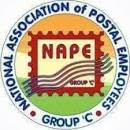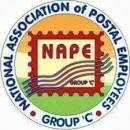INDIA's DIGITAL MONEY
As eagerly awaited, CBDC pilot was finally launched in India yesterday (1-Dec).
What is CBDC?
It is Central Bank Digital Currency. In India the symbol will be e₹ or e-rupee.
CBDC is a simple digitization of currency notes and coins. In same denominations available today i.e. 50 paise, 1 rupee, 2 rupees, 5 rupees, 10 rupees and so on. This digital money shall also have RBI Governor's signature just how a currency note does today.
And just how Reserve Bank of India prints and distributes paper money, they will now distribute e₹ to banks.
Banks in turn will allow withdrawal of this money into a form of a digital wallet on one's phone, to use it further.
Today, you can withdraw cash from banks, keep it in your wallet, and no longer require the bank account to make a transaction using cash. Same way, you can use this wallet to transact without the bank account as well. Meaning, I have 10 rupees in HDFC bank, 10 rupees in ICICI, I pull both into my e-wallet and then use that 20 rupees to buy anything without any linkage to HDFC or ICICI anymore.
Now, if you want to buy a cup of tea at a tea stall, you will scan a specific QR code and transact using your wallet.
Simple. And easy.
How is CBDC different than let's say Paytm?
The primary difference is that CBDC is sovereign money. Meaning it is a legal tender backed by the RBI, just like the notes.
When you transact using notes, nobody refuses you a good or a service, right? It is the same thing. Merchants can no longer tell you 'I don't use Paytm, I only use PhonePe'.
What's in it for the govt?
Well, money. Govt spends 8,000 crore or so to print, store, and distribute paper notes and coins. All that gets digitised. Cost goes way down, if not away. Their is additional money bank incurs to get cash from RBI and deposit and fill up ATMs. Now ATMs in future will never go empty if they still exist
And unlike paper money, this digital money transactions can be traced. So all that under the table give cash take cash goes out the window.
What's in it for you?
Since this is a legal tender, you can use it for all purposes that you use cash for. Even for paying taxes, for example.
No one will deny you service.
It is much faster, secure, and seamless. Without the failure rate (of UPI, let's say).
You don't pay a paisa to a third party private provider for using their services to make payments.
Is it possible that people may not use it that much?
Yes, and there are some shortcomings too. But all that depends on how the pilot goes. Let's reserve the negatives for now, because we need time to be able to baseline and call them out.

.jpeg)
.jpeg)


.jpeg)


